GAR was invited to fly with the 100th ARW out of RAF Mildenhall on what would be the last sortie flown in support of the F-4F Phantom aircraft. Kev Wills reports from ‘Quid 22’ while Captain Sebastian M.M. Fiedler from JG71 “Richthofen“ gives us an exclusive pilot’s perspective. Additional images from Darron Hall.

© Kev Wills – www.globalaviationresource.com
The withdrawal of the German Luftwaffe’s F-4F Phantoms will mark the end of 40 years of continuous service in support of NATO, and this second GAR feature to commemorate the forthcoming retirement (plus Karl’s Wittmund blog) aims to provide some insight into the farewell training mission conducted by JG71 “Richthofen” and the 351st Aerial Refueling Squadron (ARS).
100th ARW…
The 100th Air Refueling Wing (ARW) is the only United States Air Force air refuelling unit permanently stationed in Europe. Equipped with a complement of 15 KC-135R Stratotanker aircraft, the unit is kept extremely busy supporting on-going US and Allied operations in the Middle East and Africa, as well as conducting its day-to-day task of providing training support to USAFE and other NATO aircraft.
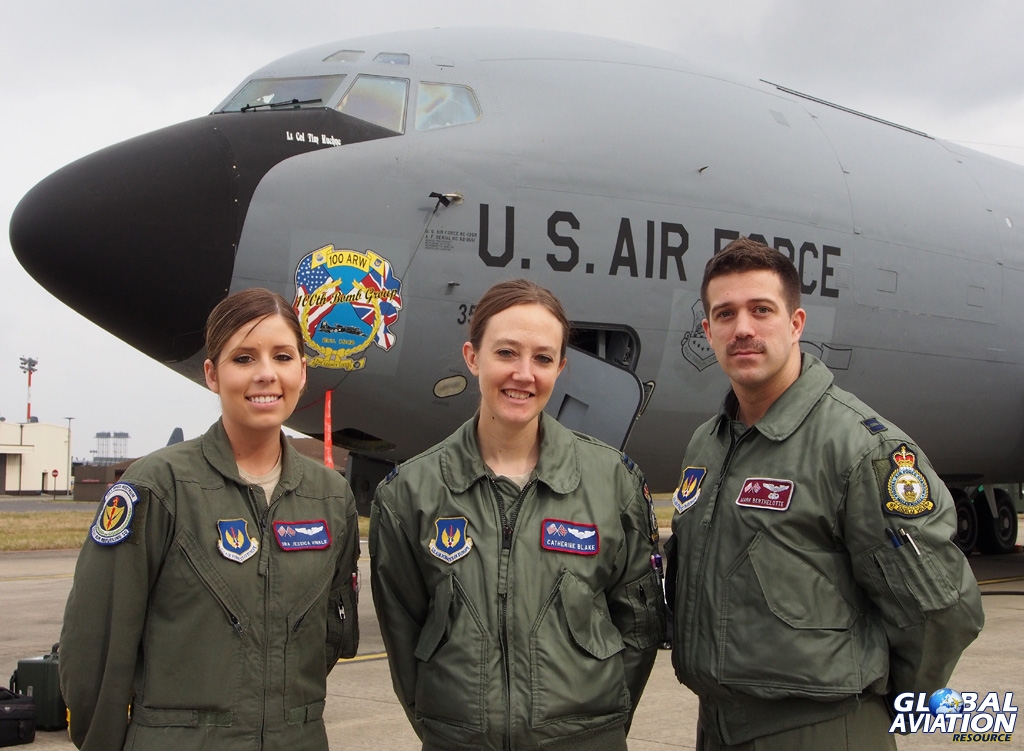
© Darron Hall – www.globalaviationresource.com
Recent high profile operations have included “Odyssey Dawn” and “Unified Protector”, flown in support of aircraft performing missions over Libya, along with lesser-publicised sorties alongside French forces providing aerial cover to international military operations on the ground in Mali.
Airborne on Quid 22…
We arrived at the 100th ARW operations building to meet our crew of three for the day’s mission – pilot, co-pilot and boom operator. After the introductions it was on to the serious stuff; a mission briefing by the aircraft commander, Captain Mark Berthelotte, covering the outline of the flight including take off timings, route brief, refuelling area brief, receiver brief, and of course the all important weather information…
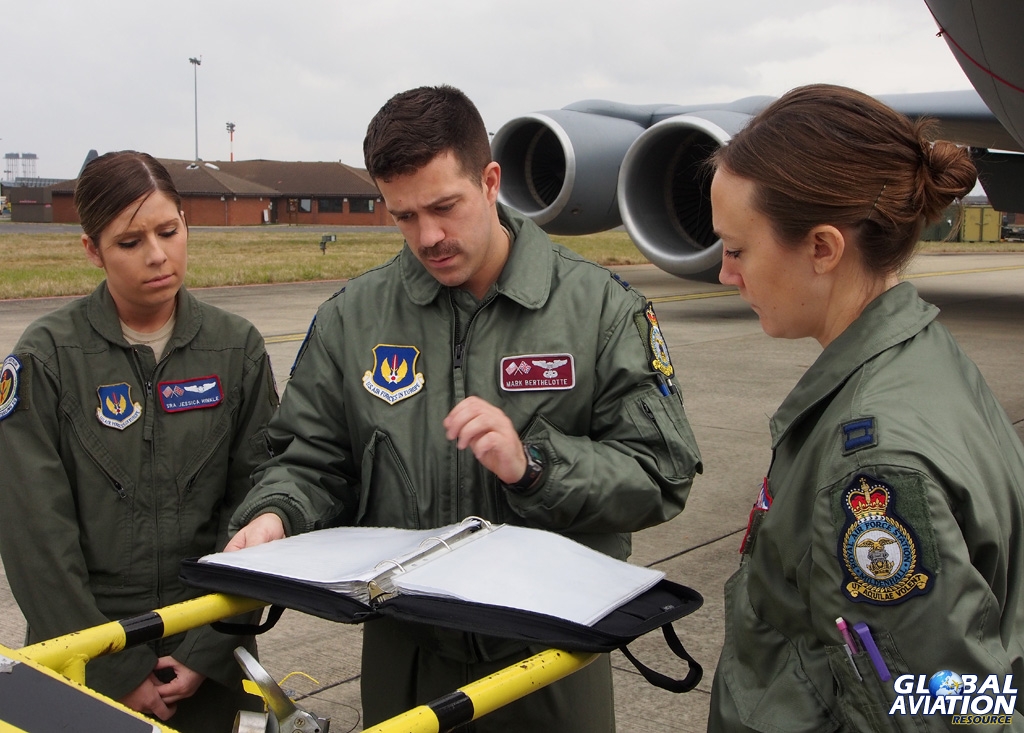
© Darron Hall – www.globalaviationresource.com
Soon after, we headed out to the crew transport for the short drive to find our KC-135R (62-3551) on its spot on the flight line. After taking in a couple more briefings it was time to board the aircraft, whilst the aircraft commander did his external walk around of the tanker for a visual check of the airframe. Inside, the co-pilot, Captain Catherine Blake, was going through her pre-flight checks, as was the boom operator, Senior Airman Jessica Hinkle. The boomer’s duties also include looking after the passengers and ensuring the aircraft cabin and cargo are secured and safe to fly.
After a short taxi to Runway 11 we were soon airborne and climbing out towards the east coast, before routing out over the North Sea. We were heading towards Air Refuelling Area “Rosy”, a block of dedicated airspace used for air-to-air refuelling and located over North Western Germany. The area covers 30 nautical miles by 14 nautical miles, with an altitude range from FL090 (9,000 ft) to FL230 (23,000 ft). Heights are determined on the day by other traffic in the area and the airspace is under the control of Bremen Radar.
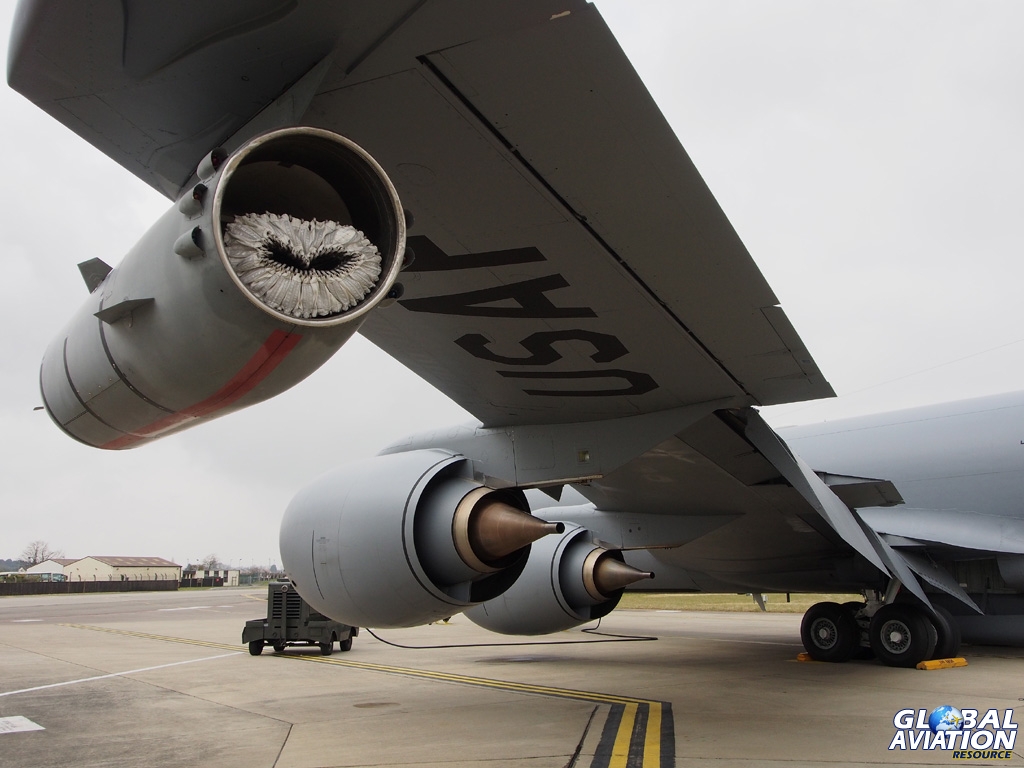
© Darron Hall – www.globalaviationresource.com
After a transit of around an hour we started our descent into “Rosy” to rendezvous with our planned receivers. Trade for the flight was to be three F-4F Phantoms from JG71 from Wittmund AB, Germany, followed by four Tornado aircraft, also belonging to the Luftwaffe.
Contact…
Pre-refuelling checks complete we took up a racetrack pattern and awaited our first receivers. After around ten minutes contact was made with “Baron flight”, three F-4Fs from JG71. Unfortunately for us the weather had deteriorated and visibility was fairly poor – nearly a white-out in actual fact – with high cloud stretching up to way over 25,000 ft. However, it wasn’t long before the Phantoms closed in and were visual with the KC-135. The three Phantoms positioned themselves and concluded their pre-engagement checks, and only then were they cleared to join and make contact.

© Kev Wills – www.globalaviationresource.com
This was Boom Operator Jessica’s first refuel with a Phantom, although you couldn’t tell, as once the pilot of the F-4F had swiftly positioned himself in the correct spot it was only a matter of seconds before a successful contact was made and refuelling commenced. It was an absolutely superb sight, laying next to the boomer, literally feet away from such an iconic aircraft and on such a momentous sortie. You fully appreciate the quality of the airmanship from all concerned when such a complex task is made to look so slick and easy, which actually couldn’t be further from the truth, of course, and is what makes training flights such as these so vitally important.
Luckily for us, the three Phantoms were all wearing different colour schemes, with 38+10 and 38+33 in their commemorative ‘retro’ camouflage schemes and 38+62, “Baron 1” and flown by the Commander of JG 71, in the more traditional standard air defence scheme.

© Kev Wills – www.globalaviationresource.com
All too soon the F-4s had finished their receiver training and it was time for them to depart, which also allowed our crew to reconfigure the set up in order to to refuel the Tornados; the Phantom using the American boom system for AAR while the Tornado utilises the hose and drogue method. The KC-135 carries one unit under each wing which allows two aircraft to refuel simultaneously.
The Tornados soon joined and refuelled from the wing pods – they were ECR variants and carrying the markings of JBG32 from Lechfeld AB. It wasn’t long before they too had finished their training and departed to continue their mission.

© Darron Hall – www.globalaviationresource.com
Mission complete…
After receiving confirmation from the German controllers that there were no other tasks for us, the crew completed their post-refuelling checks and we climbed up to our transit altitude for the journey back to RAF Mildenhall. In just over an hour we were safely back on the ground with another valuable task successfully completed by the 100th ARW in support of its European allies.
Captain Blake told us, “Flying and training with our European counterparts is exciting and rewarding. The opportunities we have to learn from each other are endless. The multi-national exercises in which we get to participate teach us the most about our partners. Some of the aircraft we get to refuel are not available to train with in the United States, so training with our European allies has certainly broadened our knowledge of aerial refuelling.”

© Darron Hall – www.globalaviationresource.com
Senior Airman Jessica Hinkle added, “Working with European air forces is always a fun experience. Communication can become very challenging with all the different accents and, as you can imagine, communication is very important to what we do. I’m always happy at how good all the other air forces are at air refuelling. They do everything by the book and are just as good at it as us! We have a very rewarding job and it’s such a incredible thing to be able to do it with so many different countries.”
The ‘phinal’ contact…
While the crew may have treated this as ‘just another training’ sortie’, it was in reality much more than that. In a few days time Wittmund will host the event marking the end of the Luftwaffe’s relationship with the F-4F Phantom II. It was a relationship that started in 1973 (1971 for the RF-4E) and one can barely begin to imagine how many times USAF / USAFE KC-135s have tanked German Phantoms since then.

© Kev Wills – www.globalaviationresource.com
For GAR to be present on the last ever USAF tanker trip with the F-4F was a huge honour and one for which we will always be grateful. The 100th ARW will continue to support NATO operations with its fleet of KC-135 aircraft for the foreseeable future and, while the Lufwaffe’s Phantoms will soon be no more, whenever I see one of the Mildenhall-based tankers, I will remember that I was there for the Phinal Contact.
A pilot’s perspective – Captain Sebastian M.M. Fiedler, Wittmund Fighter Wing 71 “Richthofen“
In-flight refuelling of the F-4F is a common element of many missions. It doesn’t only consist of the refuelling procedure itself, but starts with a solid mission preparation involving all flight members as well as the tanker crew.
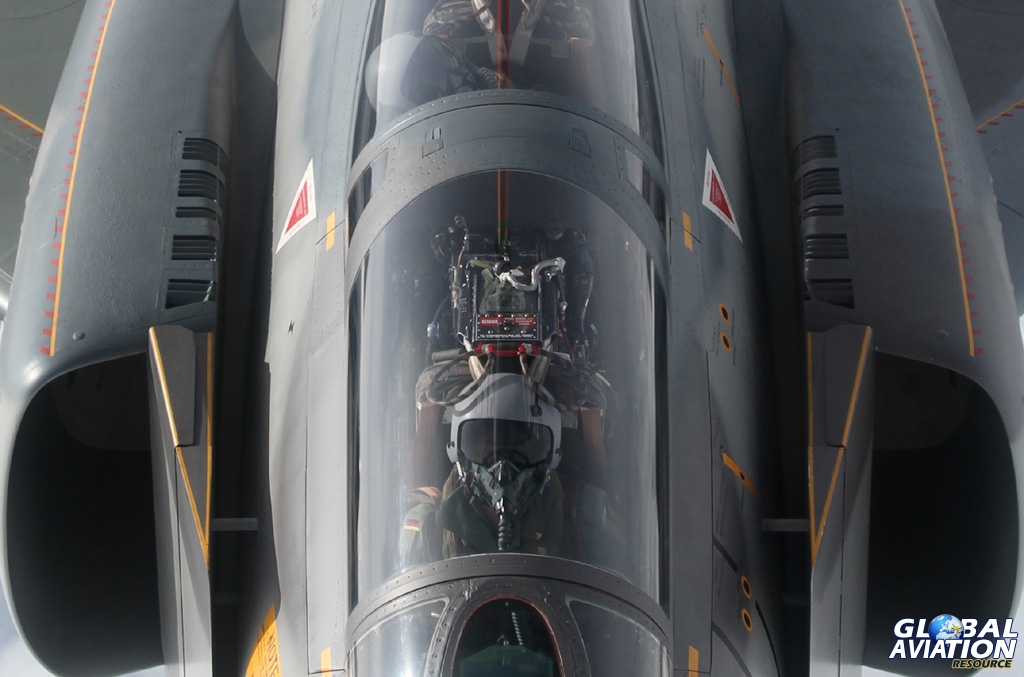
© Kev Wills – www.globalaviationresource.com
AAR planning and execution must enable every flight member to get fuel safely and as quickly as possible in almost any weather situation. Despite all mission preparation and training, refuelling the F-4F is always a challenge for the aircrews.
The following text describes the refuelling procedure from the aircrew’s view, starting with the intercept on the tanker.

© Darron Hall – www.globalaviationresource.com
Starting the intercept on the tanker means “flipping your mental switches” from whatever mission you have been flying so far to “refuelling mode”. Refuelling could follow any mission from flying IFR on a deployment, to air-to-air combat.
As a flight lead you will prepare the intercept in coordination with air traffic control, rejoin your flight and start the appropriate checklists. At the same time the lead aircraft’s back-seater will try to get a radar contact on the tanker as soon as possible to adjust the intercept geometry for the weather and other factors like tanker altitude and airspeed.

© Kev Wills – www.globalaviationresource.com
The intercept is especially complicated when taking place in the weather. It must be expeditious but you have to consider that your wingmen are flying formation on you and that you and the tanker are under IFR control. If the visibility is good you will be able to see the tanker at 20 miles out as the aircraft is so huge.
For the F-4 the tanker will usually be a KC-135 or a KC-10. In the final conversion of the intercept you will switch your flight from the air traffic control frequency to the tanker / boom operator frequency. These guys will immediately be interested in your tail-numbers, refuelling order and the state of your weapons. While you are approaching the tanker’s stern with an overtake of approximately 50 knots, you turn off all your emitters.

© Kev Wills – www.globalaviationresource.com
Usually the flight lead will fly his aircraft to the pre-contact position, one aircraft length behind the extended boom, and send his wingmen to the observer positions on the tanker’s wings. Approaching the boom is really the last moment for the pilot to be relaxed, because thereafter the “workout” will start.
The tanker flies at 315 knots and you perform the final steps of your refuelling checklist, which means that you extend your refuelling receptacle, which is located a couple of inches aft of the rear cockpit. You wait for the “READY-Light” on the Phantom’s refuelling panel. In the meantime you will already have established eye contact with the boom operator of the KC-135.
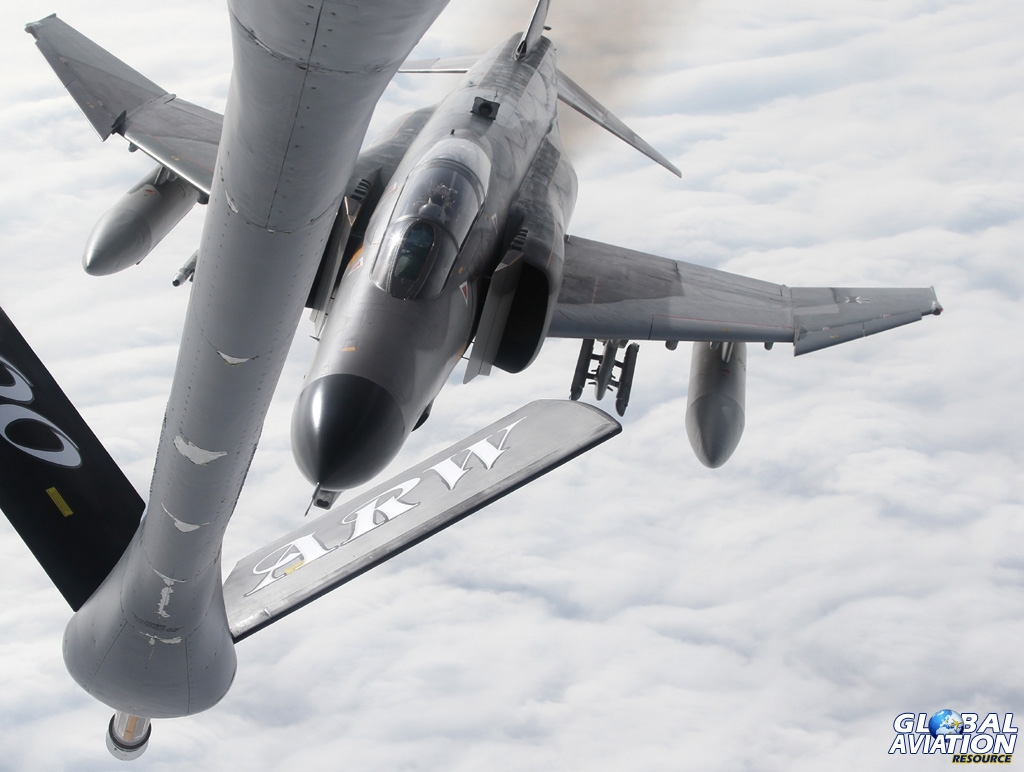
© Kev Wills – www.globalaviationresource.com
Finally, you will trim the F-4 and waggle your fingers and toes before you ask for clearance to move from the pre-contact into the contact position. With the respective clearance, you establish one to two knots of overtake on the boom, with its tip exactly at eye height, hoping that the boom operator will move it out of your way before it pierces your canopy.
Moving forward, it is important to maintain your vertical spacing to the tanker and to stop the aircraft when the tip of the boom is almost abeam the air refuelling receptacle. The challenge is that as a front-seater you are not able to see the boom’s tip any more, because it is already behind your back. So you rely on your back-seater’s commands or on the radio calls of the boom operator.

© Darron Hall – www.globalaviationresource.com
Approaching the position where you think the boom operator will be able to connect the tanker’s probe with your receptacle you need to stabilize, as the boom operators are usually hesitant to connect with a moving target. If the boom operator does not like your position he / she will not hesitate to tell you and maybe retract the boom for another approach. When you are stable and in a good position you will feel the connect as a thud goes through the whole aircraft.
At this time it is important to memorise your position in relation to the tanker. In the F-4 you will usually fly what we call the “Mickey Mouse”, because the tanker’s engines will appear to be sitting right above the canopy bow which looks a little like the head and ears of the Disney character! All movements you make while the boom is connected need to be smooth and deliberate. You can see the coloured markings on the boom in your rear mirrors and your back-seater will also tell you about the position.
The tanker is equipped with two lighting bars, which inform you about your vertical and fore / aft position. The problem is that in the F-4 you will only be able to see the lighting bars if you either move your seat fully up or fully down, as otherwise the canopy bow will be in the way. So you rely on what the WSO and the boom operator tell you. During refuelling the tanker might be turning and you will be subject to turbulence, which means that you continuously have to fix your position.
Another thing to consider is the fact that your aircraft is gaining weight. It is getting heavier by approximately 3,000 lbs every minute, which means the F-4 is producing more drag as well. So you are working the trim and the throttles all the time to compensate for the forces that try to move you out of position. Depending on your altitude you might even need so much power that you will have to put one engine in afterburner.

© Kev Wills – www.globalaviationresource.com
When you are refuelling in weather it is very likely you will get the “leans”, which means you might be thinking you are in a climb or turn but are actually flying straight and level, or vice versa. So, trust your back-seater and maybe have a glance at your instruments, which tell you about your attitude relative to the ground. If the refuelling works well, the boom operator will be pretty quiet and in the KC-135 where the guy is only a couple of meters away from you, you can see in his face and whether he is happy, or wants to send you away as soon as possible.
When it’s time to disconnect, the boom operator will tell you that either your scheduled offload is complete or that fuel flow has stopped, which means the tanks are full. The boom operator and the F-4 pilot press their disconnect buttons and the tanker retracts the boom quickly. But you are still flying your position in relation to the tanker and move slowly back and down. As soon as you see the refuelling probe in front of you, you can relax and work your after-refuelling-checklist.

© Kev Wills – www.globalaviationresource.com
But don’t relax for too long – your wingmen require fuel as well. So you move out to the observer position and give way to the other refuellers. If the weather is nice, you will now have some time to watch the others doing their “work out”, thinking about how cool it is and how great it looks to be refuelled while being airborne, but if the weather is bad you are flying close formation on the tanker, maybe not even being able to see your wingmen refuelling in very low visibility.
With everybody done, you reform your formation and the Phantoms usually climb above or descend below the tanker. With a vertical spacing of at least 1,000 feet, you contact the appropriate station and continue your previous mission or start a new one.
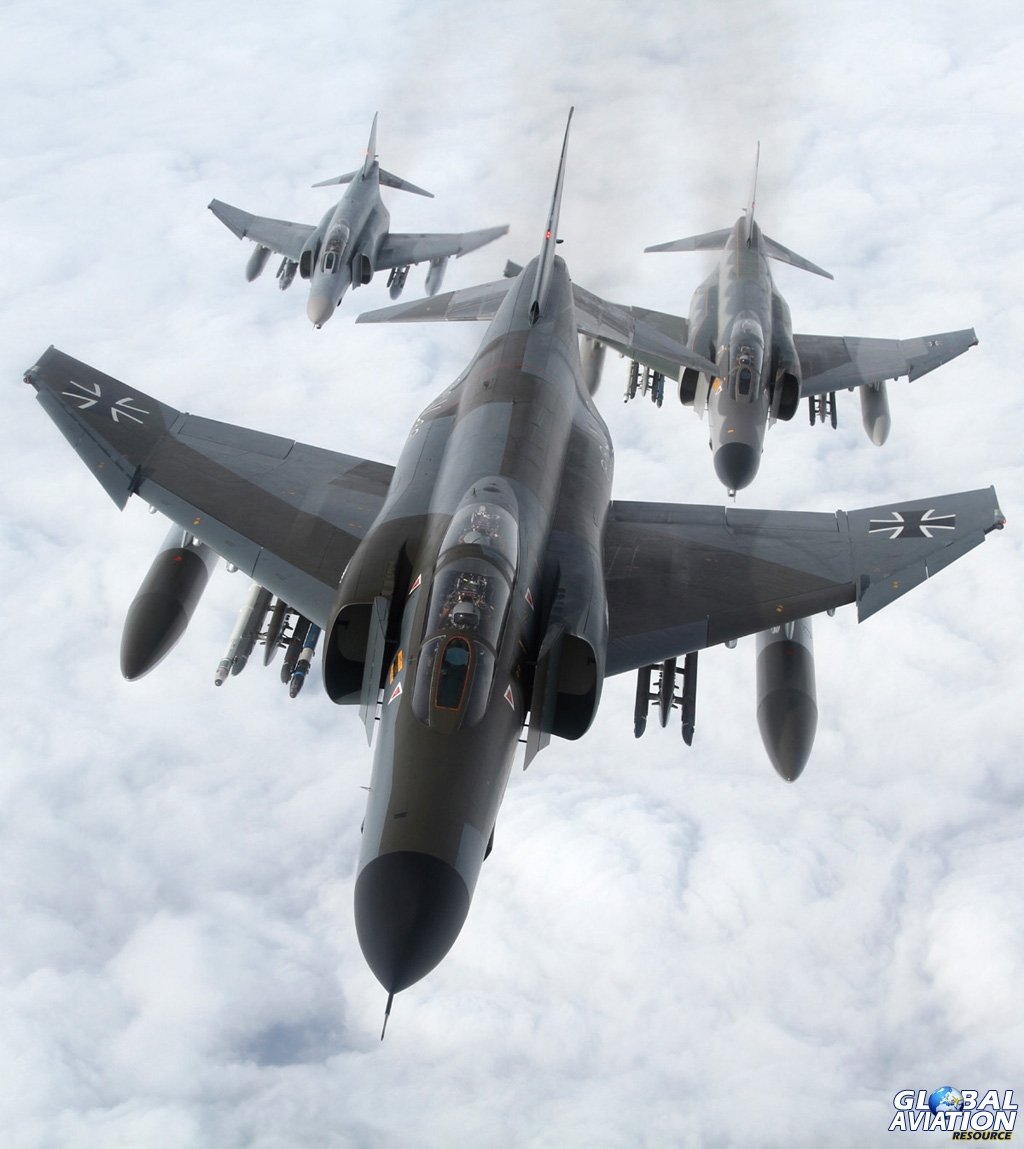
© Kev Wills – www.globalaviationresource.com
Air-to-air refuelling is one of the most challenging manoeuvres when it comes to pure aircraft handling skills. You only gain confidence in yourself and the procedures by practising it over and over again. During your first refuelling rides, manoeuvring close to the large tanker while being connected to it is a little scary. When you gain experience it’s not scary any more, but it will always stay impressive.
Kev Wills and Darron Hall would like to extend sincere thanks to everyone who made this piece possible. At RAF Mildenhall, the crew of Quid 22 and PAOs Lt Chris Mesnard, SSGt Austin May and TSgt Neal Joiner, and at Wittmund, notably Oberst Gerhard Roubal (Commander JG 71), Captain Sebastian M.M. Fiedler and also Hartmut Feldmann . GAR will be bringing you more on the F-4F’s retirement, including a report from Wittmund, in due course.


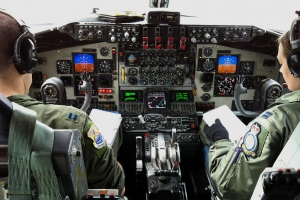
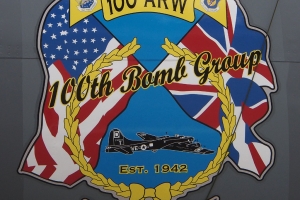

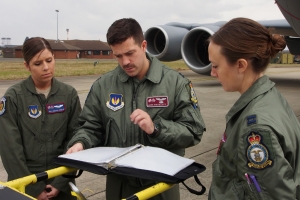
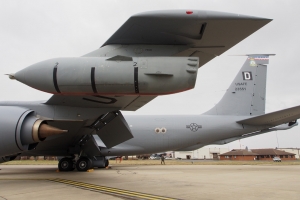

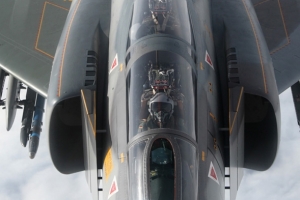


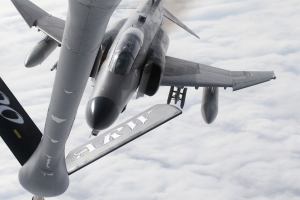
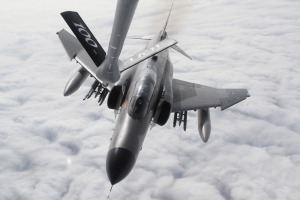



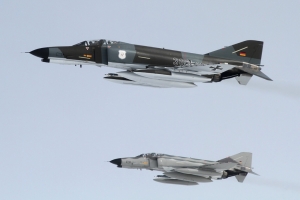
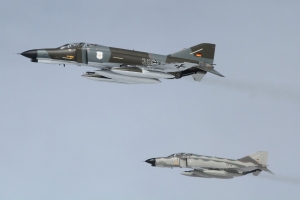
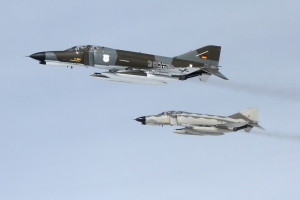
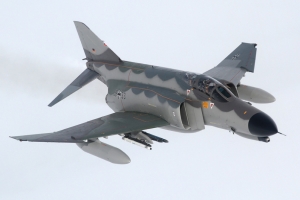


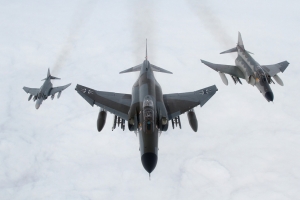

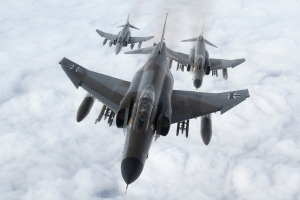
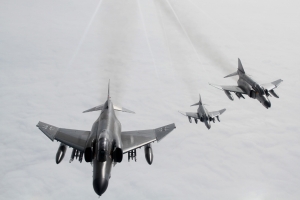


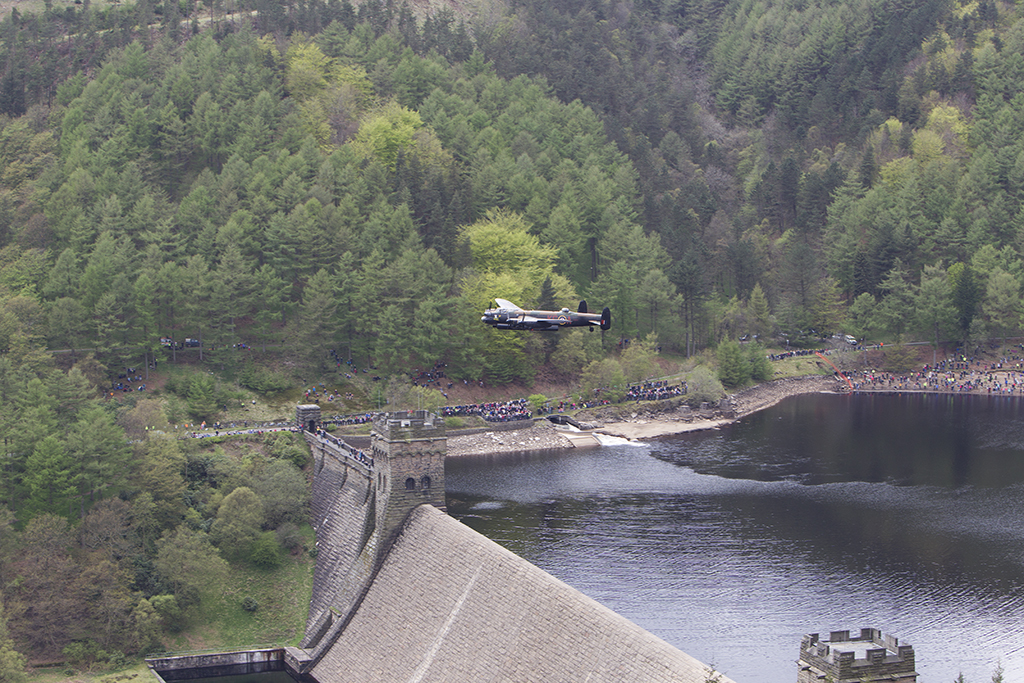
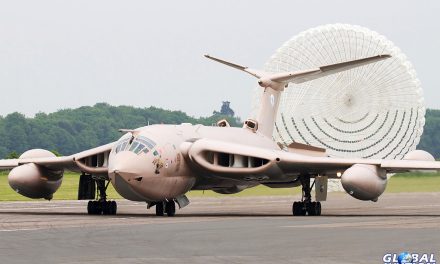

I flew the F-4 and ended up with 3,500 hours and many refuelings. I have the utmost repect and admiration for the tanker crews and the boomers. I was always surprised how expert the boomers were in their jobs. In combat the tankers were great and I thank you for all you all did and the extra mile you went to accomplish the mission. We both know what the type of actions to which I am referring.
Thanks again and GBU.
Ross Peeler USAF(ret)
What great pictures. Took me back to the Vietnam time frame and of my days in SAC and
on Tanker Task Forces/ Young Tiger/ Cornet East/ Cornet West and many more
missions.I have several pictures (slides) of about every Tanker Task Force
mission I was on. Unfortunately I never went on any as a crew chief, It was
always as the Task Force Maintenance Supervisor.We refueled about every type
of Fighter Aircraft going on to and coming out of South East Asia. 23 years of
my 30 years in the Air Force was on the Tankers; KC-97’s and KC-135’s A & Q models.
Course the KC-97’s never went to SEA, but they were most definitely in the cold
war operations. Thank you for some very good pictures and a very good true story.
Great Photos of the Mildenhall crew doing their job and servicing the GAF Phantoms, a truly reliable work horse with highly maintainable quality GE Turbo Jet engines. When they’re gone from Europe they will be truly missed. This is an era coming to a close from the Cold War days in England and throughout Europe. Many days I spent building and repairing the J79 engines, testing them on the open test cell at RAF Alconbury near Huntingdon and performing the final aircraft test on a open tie-down pad at Seymour Johnson AFB NC while facing the ammo storage area. Once lighting both Afterburners while on tie-down pad at a Marine base in NC made me almost crap my pants as the aircraft jumped forward, breaking the heavy-tie down chains. Never attempted a double AB light again on a test pad but it was an experience I had to do, like a high speed taxi, not allowed by US Air Force rules but I did it anyway on a Marine base. Never passed up an opportunity to do something J79 related during my 45 years of supporting the F4 Phantom/J79 engines.
Mr. J79 Eng, USAFE Ret 89